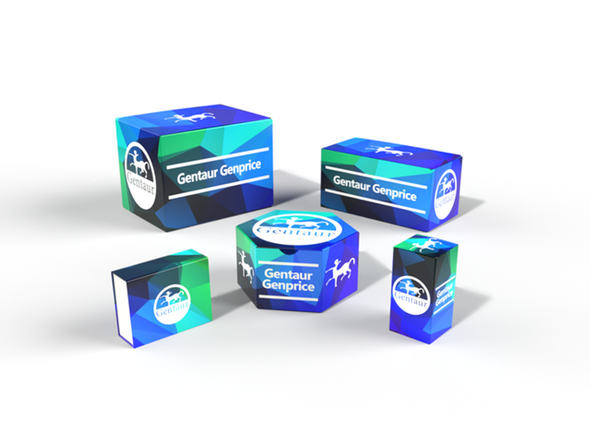Description
TSHZ1 Antibody | 6755 | Gentaur UK, US & Europe Distribution
Host: Rabbit
Reactivity: Human, Mouse, Rat
Homology: N/A
Immunogen: TSHZ1 antibody was raised against a 16 amino acid synthetic peptide near the amino terminus of human TSHZ1.
The immunogen is located within amino acids 70 - 120 of TSHZ1.
Research Area: Stem Cell
Tested Application: E, WB, ICC, IF
Application: TSHZ1 antibody can be used for detection of TSHZ1 by Western blot at 1 μg/mL. Antibody can also be used for immunocytochemistry starting at 2.5 μg/mL. For immunofluorescence start at 2.5 μg/mL.
Antibody validated: Western Blot in mouse samples; Immunocytochemistry in mouse samples and Immunofluorescence in mouse samples. All other applications and species not yet tested.
Specificiy: N/A
Positive Control 1: Cat. No. 1288 - A20 Cell Lysate
Positive Control 2: Cat. No. 17-208 - A-20 Cell Slide
Positive Control 3: N/A
Positive Control 4: N/A
Positive Control 5: N/A
Positive Control 6: N/A
Molecular Weight: N/A
Validation: N/A
Isoform: N/A
Purification: TSHZ1 Antibody is affinity chromatography purified via peptide column.
Clonality: Polyclonal
Clone: N/A
Isotype: IgG
Conjugate: Unconjugated
Physical State: Liquid
Buffer: TSHZ1 Antibody is supplied in PBS containing 0.02% sodium azide.
Concentration: 1 mg/mL
Storage Condition: TSHZ1 antibody can be stored at 4˚C for three months and -20˚C, stable for up to one year. As with all antibodies care should be taken to avoid repeated freeze thaw cycles. Antibodies should not be exposed to prolonged high temperatures.
Alternate Name: TSHZ1 Antibody: CAA, TSH1, NY-CO-33, SDCCAG33, Teashirt homolog 1, Antigen NY-CO-33
User Note: Optimal dilutions for each application to be determined by the researcher.
BACKGROUND: TSHZ1 Antibody: The Teashirt zinc finger homeobox (TSHZ) family comprise a family of evolutionarily conserved transcription factors that, in Drosophila, are active in specific body parts for patterning, but whose function in vertebrates is less clear. TSHZ1 has been found to be required for axial skeleton, soft palate and middle ear development in mice and may be involved in a common pathway with the Hox genes. Both TSHZ1 and the related protein TSHZ3 have been found to interact with FE65, an adapter protein that binds to the amyloid protein precursor (APP) in neurons. Together with SET, a component of the inhibitor of acetyl transferase, and histone deacetylases, these proteins formed a gene-silencing complex whose target includes caspase-4.






